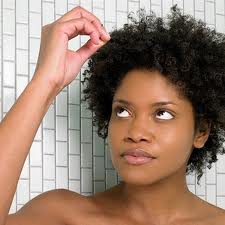 |
| Shea Avocado Butter |
Where can I get ingredients for my mix?
Internet:
Brambleberry
Wholesale Supplies Plus
DIY Hair Care Products
Etsy
Elements Bath and Body
Locally:
WholeFoods
EarthFare
The Vitamin Shoppe
Wal-Mart
How do you get the grit out of your shea butter?
Melt the shea butter down. You can use a double boiler (if you don't have one, just make sure to watch it on the stove and keep it on LOW) or a microwave. Once the shea butter is melted completely, place in a container and place the oil in the freezer for about 30-45 mins. or until hard again. Should be a smooth consistency when you take it out and free of grit.
How do you keep your whipped mix from getting hard?
If your mix goes back to being hard, you need to re-whip it. If you don't let the shea butter harden all the way when you place it in the freezer after melting it before you whip it, then it will harden up all the way and you will have to re-whip it.
My mix keeps coming out greasy, why is that?
You may need to cut back on the amount of oils you're using or you may need to change the oils your using. Some oils are heavier than others and you don't want to use too much of those oils. You can also add cornstarch to your mix to cut the greasiness. Adding a bit more shea butter will also help balance out the mix.
My whipped shea butter melted, is it ruined?
No, just place it in the freezer or refrigerate until hard and re-whip the mix if you want to.
I don't like shea butter can I use something else?
Yes, you can use kokum, mango, illipe, avocado, almond and some places even sell coffee butter. Just remember not all butters are the same, some are heavier than others and some may be better for the skin than the hair so read the descriptions and reviews carefully.
Do I need a preservative?
No. If you don't add water or another perishable ingredient, you won't need to add a preservative. If you add aloe vera, make sure it is preserved already. Whipped shea butters can last up to 12-24 months.
Can I use my mix for my hair and skin?
Yes, you can use it anywhere.
What do I have to do to sell my shea butter mix?
Test it and get reviews from family.
These are the questions I get the most and I hope I answered some of the questions you may have had as well.
Thanks for reading!
For Your Body & Hair Butters Visit: DIY Hair Care Products













